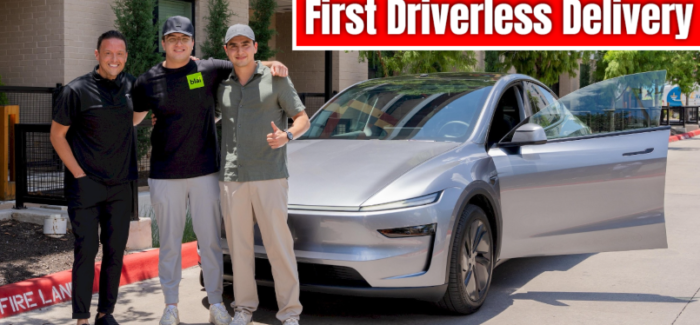Tesla’s First Driverless Delivery: Did It Really Happen?
When Elon Musk makes a promise, people usually take it with a grain of salt. That is why what happened recently took many by surprise. Tesla not only followed through on a bold claim but actually beat its own deadline. Earlier this month, Musk said Tesla would deliver a fully autonomous vehicle from the factory straight to a customer’s house on June 28. In typical Tesla fashion, it arrived ahead of schedule—on June 27.
The car, a Quicksilver Tesla Model Y All-Wheel Drive, started its journey at Giga Texas. It pulled away from the production line and made its way onto public roads, navigating highways and streets without a person inside. It eventually arrived in the Zilker area of Austin, where a customer named Jose waited for his new vehicle to arrive. Tesla filmed the entire trip and shared the video online, where it quickly stirred both excitement and skepticism.
The ride was done without anyone in the driver’s seat, and there were no remote operators guiding it in the background either. According to Elon Musk, this was the first time a car completed a fully autonomous journey on public highways in the United States without human intervention. While companies like Waymo have achieved something similar, they still operate under more limited conditions.
What made this moment even more interesting was the presence of manufacturer plates on the car. These plates are typically used for testing vehicles, not ones being delivered to customers. That sparked debate about whether this was truly a customer delivery or just a staged demo. However, Tesla’s Artificial Intelligence chief Ashok Elluswamy clarified that the car was indeed assigned to a real customer—Jose—who had randomly been selected from the Austin area. Jose confirmed this himself on social media.
Elluswamy also added that the vehicle was no different from any other Model Y rolling out of the factory. So why the manufacturer plates? The reason likely comes down to legality. Tesla is the only company in Austin currently licensed to operate fully autonomous vehicles without a safety driver. Delivering a registered customer car this way would not be legally allowed—at least, not yet.
The car was running on Tesla’s Robotaxi software for the journey, which is separate from the Full Self-Driving Supervised software that was installed once the car reached its destination. So no, Jose did not get early access to Tesla’s fully unsupervised system just because his car drove itself to him.
In the end, it was a powerful demonstration—part technology flex, part publicity play.


Submit a Comment